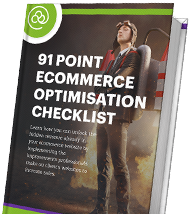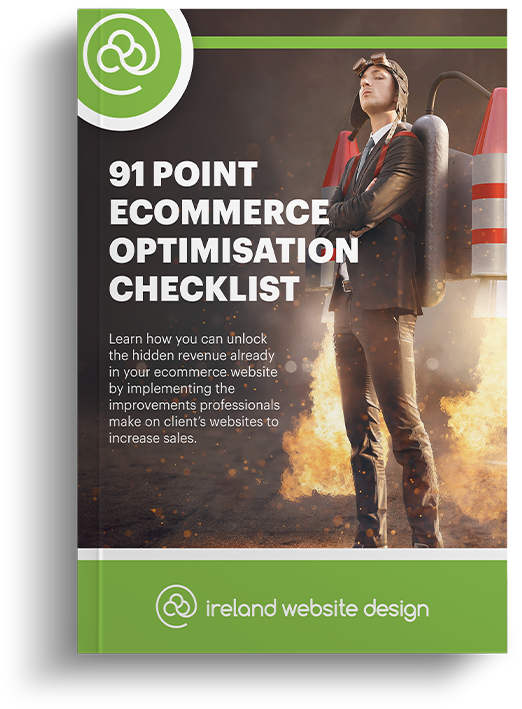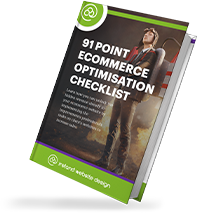SEO mistakes and errors can be found throughout websites of all types, but SEO mistakes of eCommerce websites exist in a different dimension completely. While every website is important in their own way, eCommerce websites exist to make sales within them and do not always have a physical shopfront to make sales within too. Therefore correct search engine optimization of eCommerce websites is key to their success. Here we show you five major SEO mistakes of eCommerce websites that are alarmingly commonplace online today. From simple text and labeling bad habits, these mistakes can be easily fixed once identified. You may be guilty of some (or all) of these below, so use this information to correct the mistakes and drive even more traffic and sales to your eCommerce website.
Mistake #1 – Using the Wrong Words and Terms
Your SEO keywords and terms should match with the words and terms that people will search Google for. Imagine if you yourself were looking for an Italian restaurant in your town – you would search for something along the lines of ‘Italian restaurant Wicklow’ or ‘Italian restaurant Wicklow city’ etc. If the web pages for an Italian restaurant in Wicklow are optimized for words and terms such as ‘traditional bruschetta in Wicklow’; they will not appear high up in the SERon, the search engine results page (SERP) for the more generic terms being searched for. There is little point in optimizing web pages for search terms that are very niche and not very likely to be searched for at all.
A good way to discover what search words and terms are being used by your target audience is to analyze your biggest competitor and see what words and terms seem to work for them. Software such as Spyfu (https://www.spyfu.com/) can assist with this to show you the types of phrases that drive traffic to competitor websites. Bear in mind that when targeting the same words and/or terms as a major competitor that you are more than likely competing with a well-established business that has much more content about these terms than you do. However if you consistently create and curate quality content in relation to these words and terms (think blog posts and shared content), you can prove to be competition for them and even surpass them. A digital agency can assist you with this for professional, efficient results.
How to fix this SEO mistake: Research and discover the keywords and terms that are most likely to be searched for by your target audience(s). Then ensure that these words and terms form your SEO focus and appear in the URL, page titles, text content, alt text (within images), and meta description on the SERP to bolster a great SEO score in relation to them.
Mistake #2 – Bad, Subpar Product Descriptions
Best practice for online SEO dictates that a webpage should have a minimum of 300 words on it to rank well online. Descriptions of products may not even reach 100 words in some cases; therefore harming the SEO efforts of the webpage already. While pictures are obviously of great importance when selling online and can show many of the features and facets of a product; search engines simply cannot see images. Google, for example, scans web pages for text and word count and yes while it can identify that an image(s) is on a page, the image does not count towards the minimum word count. Knowing this, a product page filled with at least 300 words of text alongside product images is the most optimum route to take.
With this, avoid making a further mistake and simply use the manufacturer’s description for products listed on your eCommerce website. While this may seem like an easy fix, this text is most likely being used on many other websites (essentially becoming duplicated content) and it also most likely does not include the keywords and terms that you are targeting.
How to fix this SEO mistake: Reword the product descriptions across your website so that they include the overall tone of voice of your business, have a minimum of 300 words each, and contain the keywords and terms that you are looking to target. While doing this, also make sure the alternative text fields for each product image contain the keywords and terms too as this will also help with your overall page SEO score.
Mistake #3 – Too Much Duplicated Content
eCommerce websites understandably have quite a lot of similar web pages and similar page layouts – the only thing differing within them being the different products for sale. While this duplication of layout and style cannot be helped as such, the duplication of content on these pages can be. When you think about it, each of these pages may share the exact same text in terms of delivery and shipping details as well as terms and conditions. Google frowns upon duplicated and repeated content across websites as in broad terms this shows little to no effort of making fresh and engaging content for web pages.
It is often a better route to have each page filled with unique, quality content that is specific to each product for sale. Within this of course there needs to be an organic and natural use of the keywords and terms that you are looking to target. Do not rely on the same standard blocks of text that explain your terms and conditions etc. to contribute to your minimum of three-hundred words per page.
How to fix this SEO mistake: Instead of having the exact same written content on many web pages, why not flip this on its head? Instead of having the content housed on each page, instead, provide a link of each page to this written content i.e. ‘Click here for information on shipping and delivery rates and times’.
Mistake #4 – Sloppy, Random URLs
Neglecting to pay attention to the URLs of your eCommerce website pages has two major implications. Firstly, potential customers who view these on the SERP may not understand that your web pages link to a product they are interested in. It can also look off-putting and irrelevant to what they were searching for; in some cases, it can even look risky and unsafe to click/tap into. Consider the two examples below which illustrate this point. Which one would you be more likely to click/tap on if you were searching to buy a red dress online?
- URL 1 (Automatically Generated by CMS): www.shop.com/85/prod=dress(33)colour=red
- URL 2 (Customised via Backend of CMS): www.shop.com/dresses/red-evening-dresses
Secondly, sloppy and random URLs forgo an opportunity to improve your SEO score. The URL area is another area where your keyword/term can and should appear. When placed here, this is then known as a keyword-friendly URL. It is another element within SEO that shows Google how relevant a webpage and its content are in connection to search terms. With the above custom URL example, the keyword ‘dresses’ or key term ‘red evening dresses’ are both supported by the custom, keyword-friendly URL.
How to fix this SEO mistake: For your webpages that have these sloppy and random URLs, edit these in the CMS to be more reflective of the webpage content while also incorporating your keyword/term for SEO purposes. Keep in mind that wherever this webpage is linked to another webpage elsewhere, this re-direct URL will also have to be updated to avoid 404s.
Mistake #5 – Little or No Product Reviews
Google really likes it when the content of a website is shared or commented on. This shows them that there is some content that is already connecting with people and being shared by them to reach even more people. Keen to obviously direct their users to quality content consistently, Google appreciates content that thrives online and promotes these interactions. Just like how client testimonials are essential on business websites, product reviews work in the same way to inform potential customers how existing customers got on with a product or service, etc. Not only that, but an influx of written reviews adds new text to the webpage over time – again showing Google that this is a living and breathing webpage that must not feature old and out-of-date content and details.
By including social sharing options for product pages and product reviews, your eCommerce website can also reach people through social media, e-mail, and more. This is an example of the difficulty to measure ‘word-of-mouth advertising’ that exists online. The more your eCommerce website name and reviews appear in different places, the more opportunity it has to sit on the mind shelf of those who view it. If at any stage people need to purchase something online that you sell, they will have come across your website name and may go to it directly.
How to fix this SEO mistake: Ensure that your eCommerce website allows for customers’ reviews to be added to your web pages. Make sure too that the reviews can be shared across social media and e-mail easily to extend their reach even further. A website designer can implement these things for you if your eCommerce website is already lacking in them. To kick-start customers leaving you product reviews, you could offer them a discount code off their next purchase in exchange for leaving a review and sharing it online.
Use the above information to rid your eCommerce website of some of the most common and majorly harmful SEO mistakes. By implementing some simple fixes, you can actively drive more traffic, sales, and engagement with your business and brand. The eCommerce website requires extra care in areas compared to standard websites to keep it profitable, optimized, and streamlined to make sales. A digital agency can help you with this to keep your eCommerce like a well-oiled machine.
Call the expert team at Ireland Website Design on 051393524 to help drive sales to your eCommerce website and your business.




